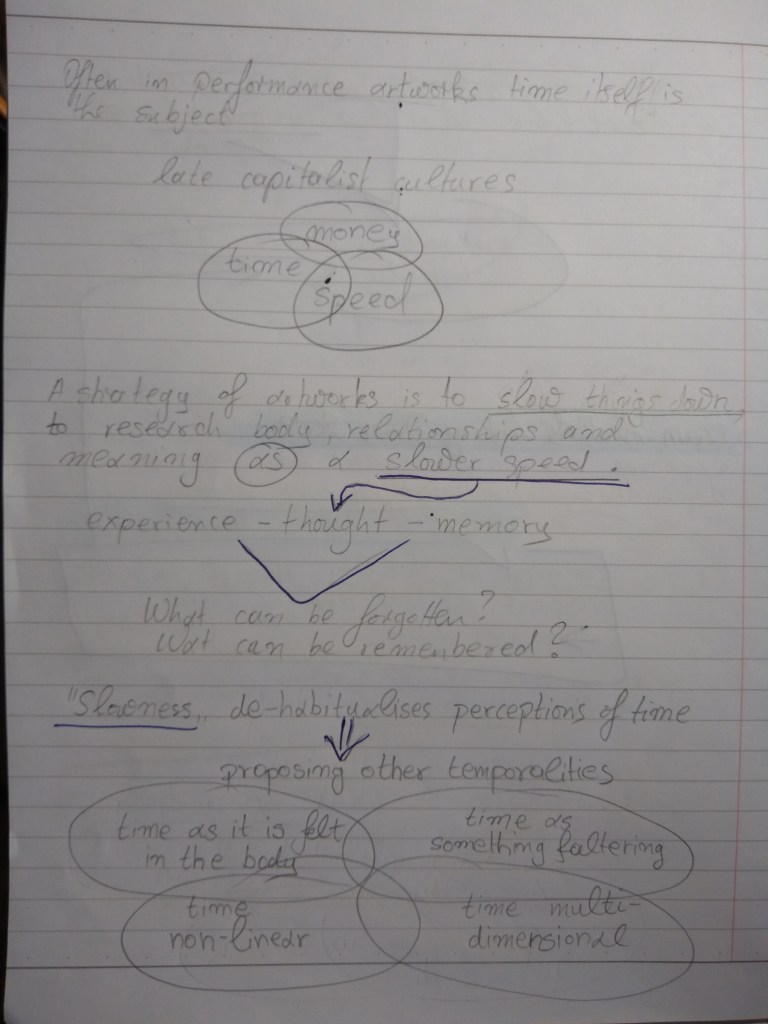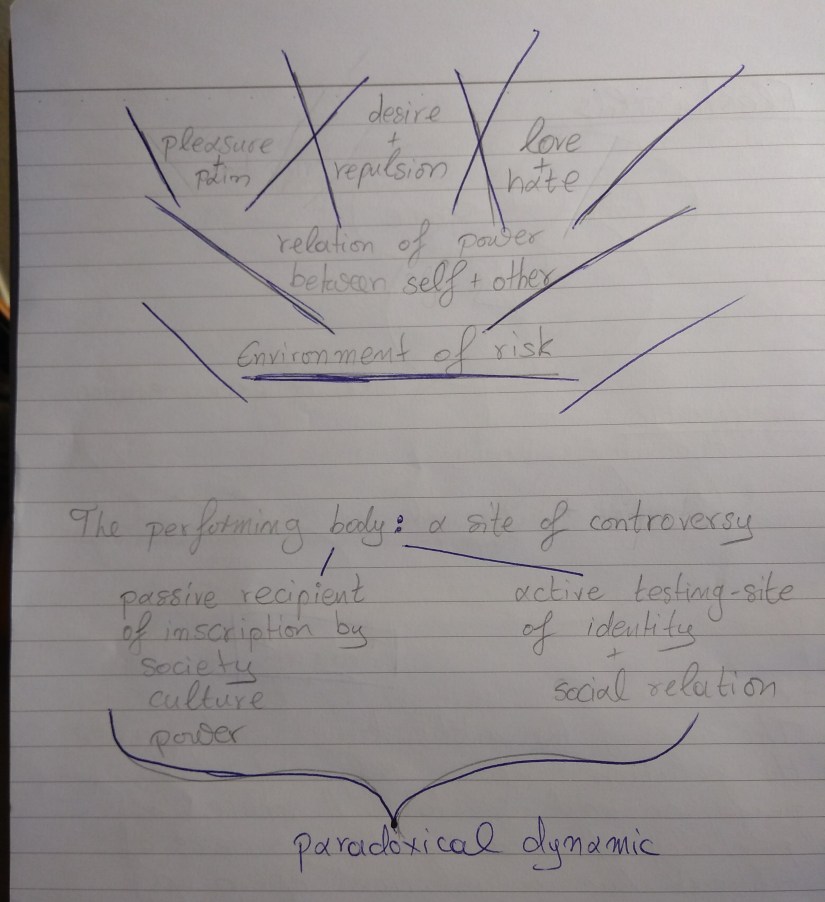Observing paradoxical dynamics emerging in test-sites
A summary: Heathfield, A. (2004). Alive. In A. Heathfield (ed.) Live: art and performance, London:Tate Publishing. pp. 6-15
A shift to the live
Damien Hirst’s website where his work “The Pursuit of Oblivion” 2004 can be found http://www.damienhirst.com/the-pursuit-of-oblivion
Adrian Heathield observes the impulse of contemporary art and culture towards “the immediate, the immersive and the interactive: a shift to the live.” Technology and spectacle-entertainment in the Western world is obsessed with” liveness”, with eliminating the distance. Visual arts research these dynamics and pose the question of “what we think as near, dear and happening now”.
The dynamics of time, space and embodied existence and relation
Time out of time
In Live art the artist, the artwork and the audience co-create an autonomous time. Panoramix 2003, a piece by artist La Ribot is used as an example. The performance lasts over three hours and consists of numerous very short parts, composed over ten years. Fleeting time and enduring time are enacted in the same site revealing time out of time, a product of bodies, senses and perceptions. Conventional time is not any more.
“Eventhood”



Displacements


Fleshworlds


Elemental life
In Joseph Beuy’s piece I like America and America Likes Me 1974 the human and the animal are two separate poles. While Oleg Kulik’s dog performance (part of his Zoophrenia series) references Beuy’s work, the artist and spectators “begin to encounter the animal inside the human and vice versa.”
Performance art exploring the limits of human possibilities investigates what is the elemental constitution of human not what is essentially human, opening up the bio-political discourse.